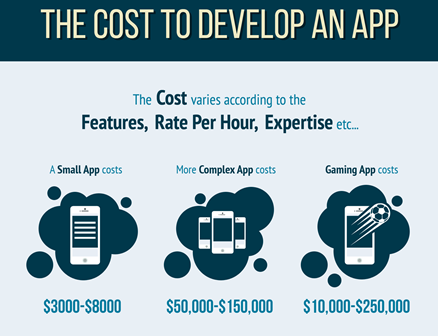
How much does it cost to create a mobile app
How much does it cost to create a mobile app?
Some time ago we wrote about the basics of creating successful mobile applications. However, many inexperienced entrepreneurs may have serious problems in properly assessing the costs of such a venture. Producing programming requires effective planning, including developing a budget for the project being undertaken.
Therefore, in this text, we will try to zoom in on the costs associated with the production of mobile programs.
It’s not a sure thing
Giving a clear answer to the title question is not possible. However, anyone who wants to try their hand at software production must at least think about: setting a schedule for the work, estimating its cost and marketing expenses or, finally, choosing an appropriate release date. All these variables affect the return on investment.
Bad moves can be extremely costly, but there is no universal recipe for success. However, some tips can be extremely useful, especially for novice developers or companies that are planning to invest in a mobile application.
Time is money
The idea of a great mobile app is only the beginning of the road. Turning an idea into a working program takes time. How much?
Of course, the answer depends on the level of complexity of a particular project, but also on the type of tools used. However, the authors of the mobidev blog.biz have decided to give an approximate production time for various types of applications:
- Easiest applications (simple graphics, basic tools, containing up to 10 data types and about 15 – 20 windows, a minimal number of forms, a few menus and minor references to the backend, for example: retrieving a record from an external source) – about 200 hours (twice that if additional backend will be required).
- Slightly more complex applications (containing about 40 windows and 20 data types, integrated with social networks or offering such interactions, basic CRUD operations – the. create, read, update and delete, one type of user, account creation module) – about 300/400 hours (double the time if additional backend will be required).
- Complicated projects (complex interactions, personalization tailored for different types of users, implemented administrative panels or CMS content management systems, using geolocation and e-commerce solutions, integrated with payment systems) – about 700 hours (+ 700 for backend).
- Extensive and complex applications (complex operating principles, large amounts of data processing, using mechanisms to enhance security, server-side processing, numerous links to social networks and built-in CRM and ERP systems) – about 1000 hours (+ 1000 for the backend).
The aforementioned values should be increased by about 40%, i.e. the time spent on testing and project management.
Experience counts, not the cost of an employee
Production of mobile applications usually takes place in smaller or larger groups. Therefore, the cost of creating a program, is affected by the expenses for a graphic designer, programmer or marketing specialist. In their text, the authors of the mobidev blog.biz, they argue, to choose such associates who boast extensive work experience.
In their opinion, the initial hourly rate that the author of an app idea may hear during an interview should not play a decisive role.
Why? The reason may be simple misunderstanding. During initial conversations, a potential team member may argue their financial expectations in a rather vague manner. Moreover, the problem may be the different, not fully agreed, vision of a particular project.
At such a stage, it is better to be guided by the proven work experience of those involved, rather than their expectations or declarations.
At the initial stage of production, it is difficult to have a common vision of the project being undertaken. Only comprehensive documentation, including precise design assumptions, can provide a basis for concrete and clear findings. It is knowledge, transferred in the right way, not low labor costs, that guarantee success in the mobile application market. The cost of a worker does not necessarily correlate with his knowledge and skills, and hourly rates can vary widely, for example:
- US: $40 – $130.
- Western Europe: $30 – $80.
- Australia: $30 – $70.
- Eastern Europe: $25 – $45.
- South America, Africa, Middle East and Central Asia: $15 – $25.
- India: $10 – $35, and in the Indian freelancer market, about $12 – $16.
How to reduce the costs described above?
I. First of all, it is important to realize that the “stingy loses twice”. The temptation to hire the cheapest workers to create a program in a fairly short time can be counterproductive. If the produced application does not meet basic standards, it will most likely have to be revised, which will only increase the final production costs.
II. Flexibility – is the key word. Creating a complete, but quite complex, app, can be risky. It’s better to spread the project over several stages. Mobile application can be developed over time. Subsequent versions of it, may bring new features or expanded capabilities – all depending on its success in the market and the revenue it brings in.
Flexible should also be the planning of expenses. A well-designed project budget should be divided into several stages, depending on the level of financial burden. In the initial and final stages of production, less money can be spent on project analysis, management or testing of the finished product.
However, in the middle of production, when the whole team is heavily involved, the monthly spending limit can be increased.
III. The development process is influenced by many factors that can change during the production of an application. Therefore, the plan ahead And try to include possible changes in these plans.
A good solution is to invest in project documentation (e.g. specification of customer requirements, user comments), which can help reduce production costs.

